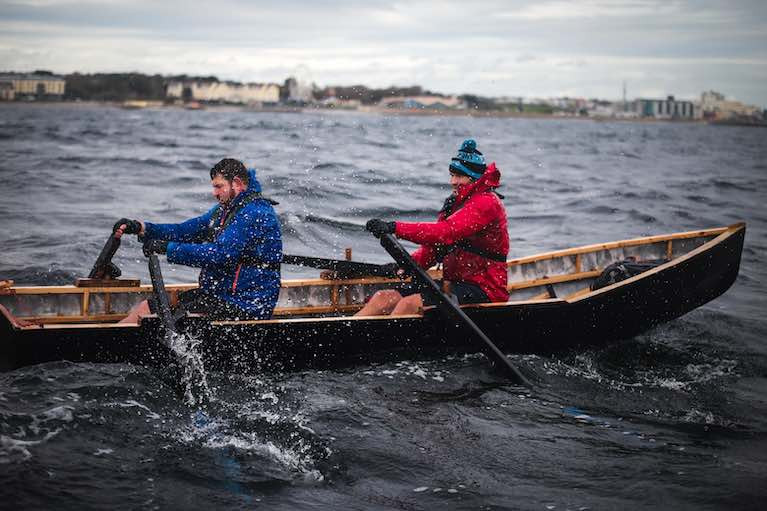When Fergus Farrell was paralysed after a workplace accident, he may never have imagined he would watch the sunrise as he plied a currach across Galway Bay.
However, the former rugby player did just that with close friend and extreme sports athlete Damian Browne this week, when the pair completed a 40 km (25-mile) row from the Aran islands into Galway city.

As Afloat reported previously, The row – which took place the morning after Galway city was embroiled in controversy over a large student gathering at Spanish Arch – was completed in less than nine hours.
The pair aimed to highlight their bid to set a new Guinness world record in an unsupported row some 4,937km across the Atlantic in two years’ time.
The two men from Renmore and Athenry have been friends and players with Connacht and Galwegians Rugby Football Club since they were young.
Farrell was diagnosed with a serious spinal cord injury after a workplace accident in 2018.

After treatment in the National Rehabilitation Hospital (NRH) in Dun Laoghaire, Co Dublin, he walked 206 km from the place of his accident to the NRH in late October 2019, and raised €70,000 for the hospital.
Browne successfully rowed across the Atlantic solo in late 2017-early 2018, enduring nine-metre high swells, head lacerations, a complete steering system failure, a capsize in a storm and a near-miss from a cargo ship.
He completed the crossing in 63 days, 6 hours and 25 minutes.
He has completed the six day, 257km-long Marathon des Sables across the Sahara, and has climbed five of the seven summits or highest peaks on each continent, with Everest in his sights for next spring.
The record of 55 days and 13 hours for an Atlantic crossing from New York to the Scilly Isles was set in 1896 by George Harboe and Frank Samuelsen. They had none of the satellite communications and safety equipment available now for such ventures.

Some 11 pairs have attempted to break that record but failed, with six of the 11 completing the crossing.
There have been 52 previous attempted crossings in an unsupported row, with 18 successfully making land in some part of Europe.
Browne and Farrell’s transatlantic bid is named Project Empower, and their ocean rowing boat will be built by master builder Justin Adkin of Seasabre, who also constructed Browne’s vessel for his solo crossing.
Website here: http://www.projectempower.ie/


























































